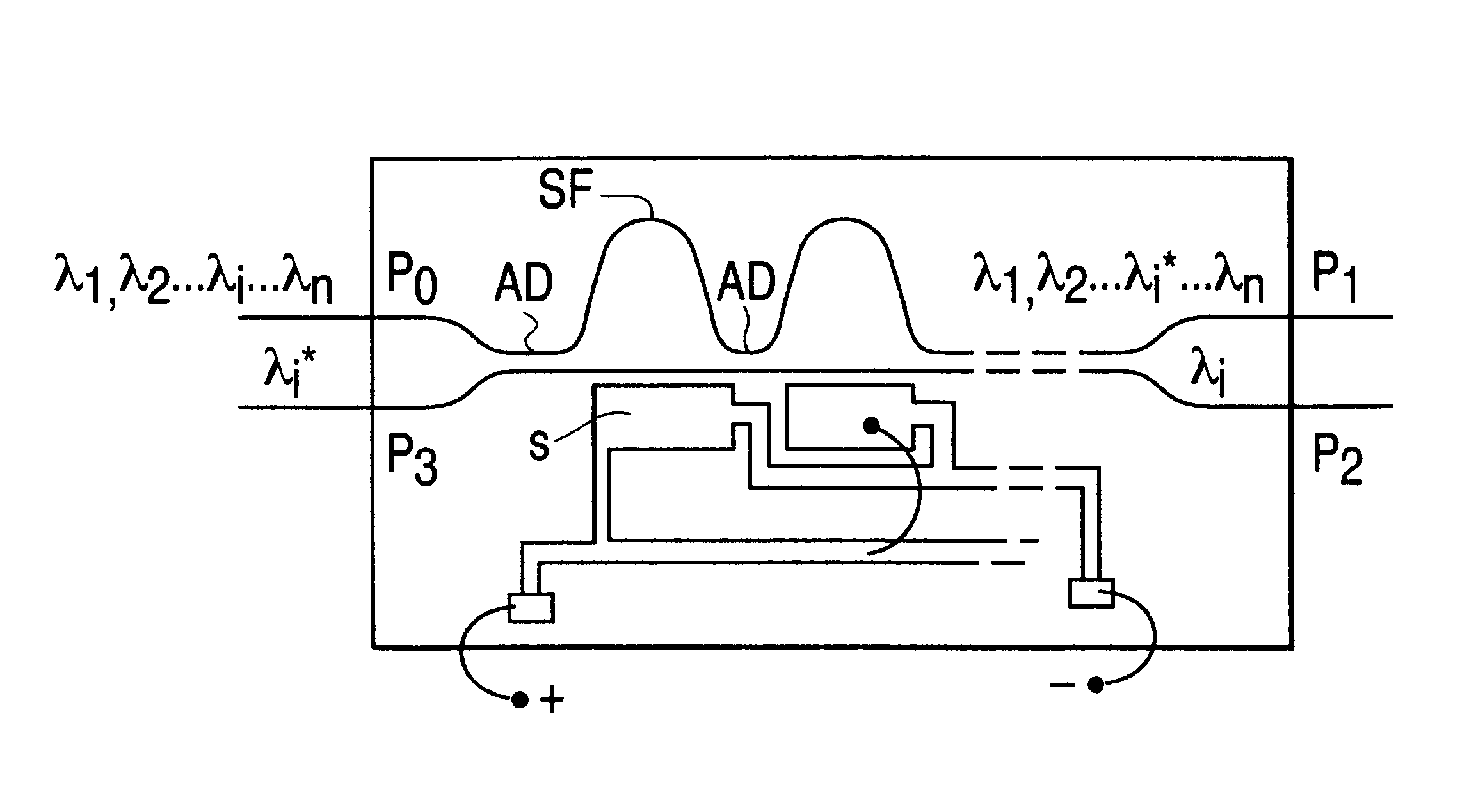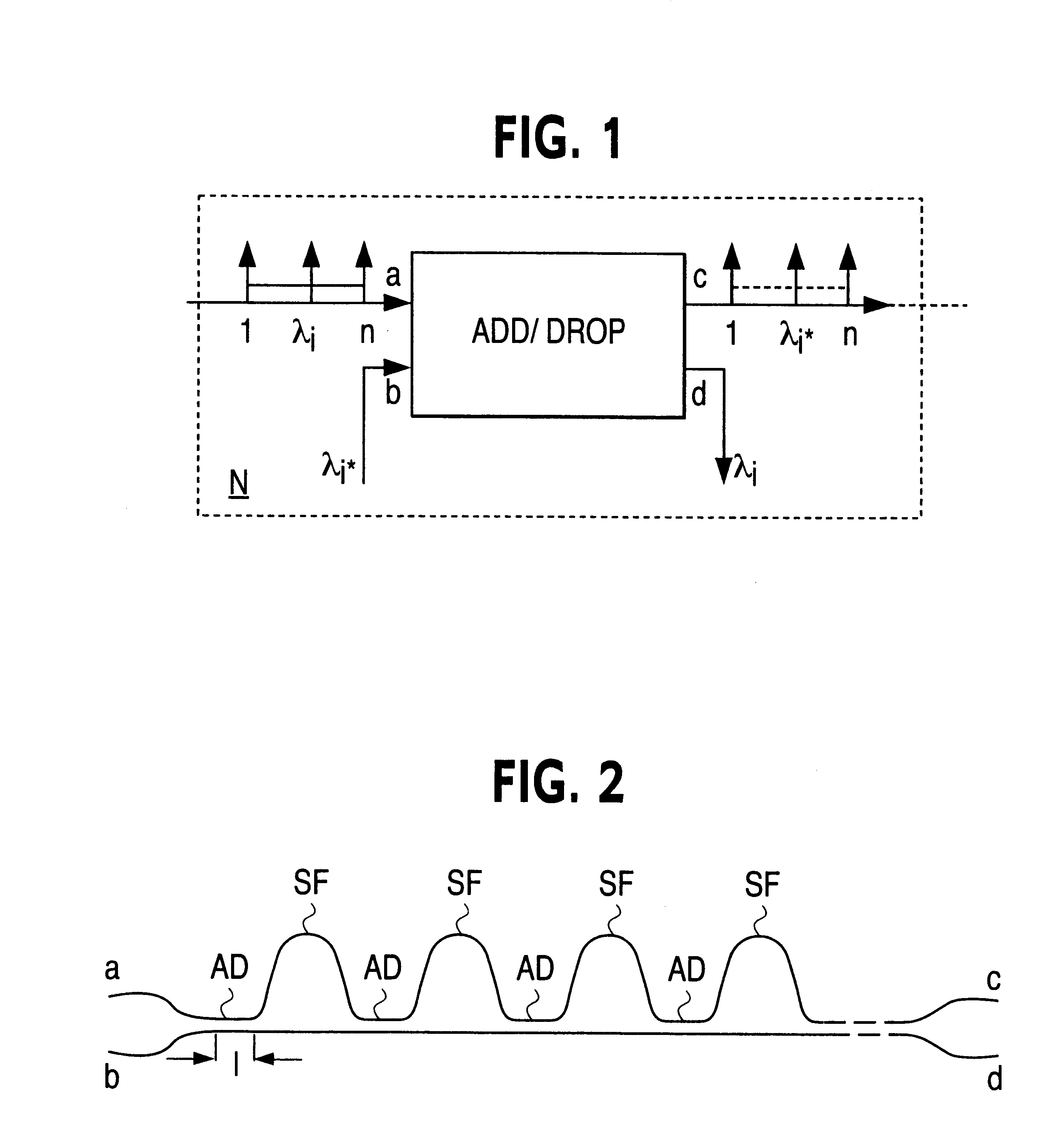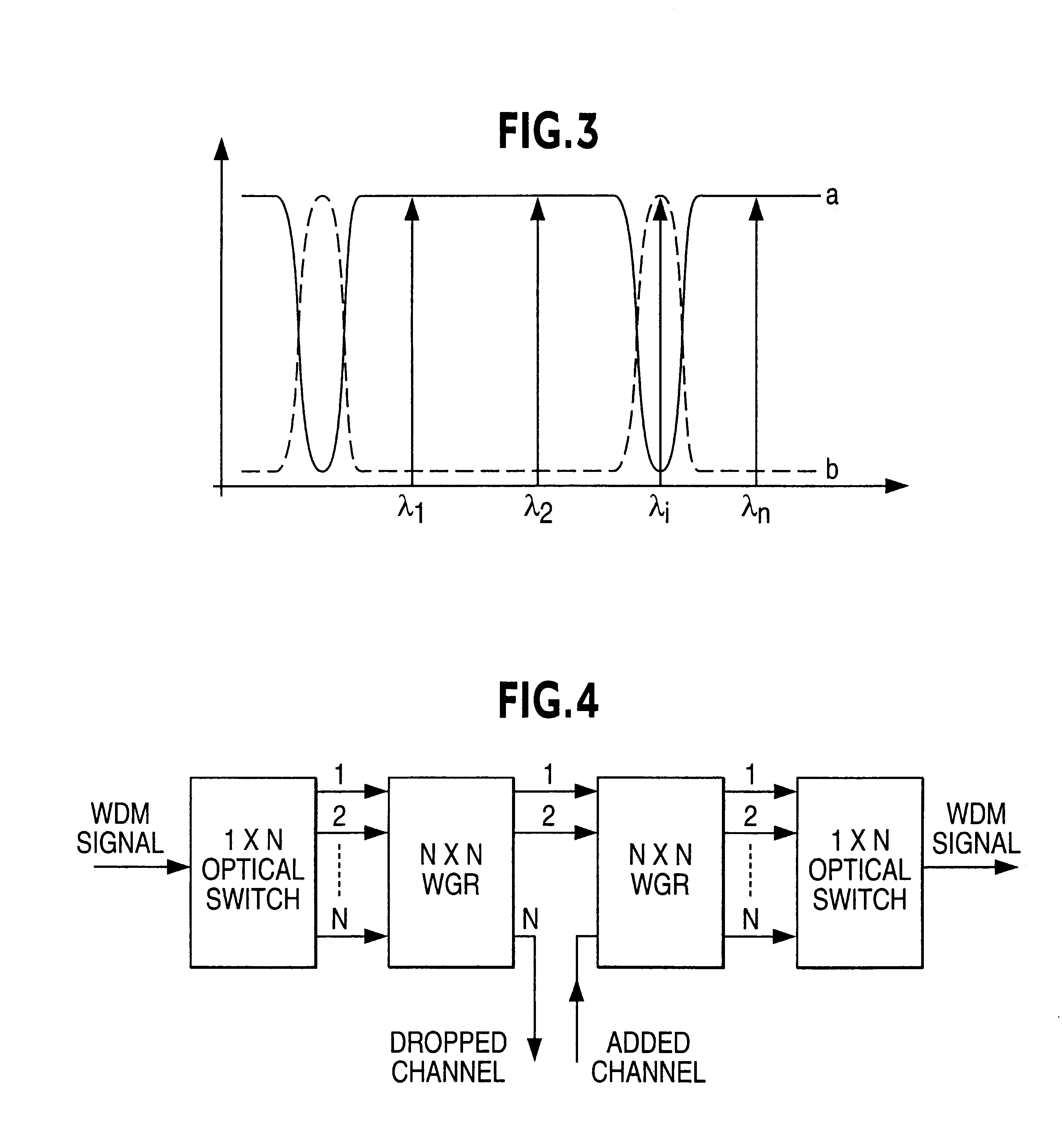Tunable add/drop optical device
a technology of optical switches and optical switches, applied in the direction of electromagnetic repeaters, transmission monitoring, instruments, etc., can solve the problems of limiting the total number of cells, imposing cost and power loss considerations, and requiring two optical switch arrays that are relatively burdensome and costly, so as to reduce complexity and cost
- Summary
- Abstract
- Description
- Claims
- Application Information
AI Technical Summary
Benefits of technology
Problems solved by technology
Method used
Image
Examples
first embodiment
based on the exploitation of a thermo-optical effect, only a heating strip is used. According to a different embodiment, a Peltier cell is applied on the opposite face of the device juxtaposedly each heating strip. According to this alternative embodiment, the performance in terms of a more effective thermal dissipation and tuning times of the device is improved.
By employing a Peltier cell (not illustrated in the figures) on the face of the device opposite to the one on which the heater is disposed, it is possible to confine more precisely the heated zone in the vicinity of the portion of waveguide to be heated, by ensuring a "local" heat dissipation to prevent undesired propagation from the heater toward other portions of waveguide that should not be heated.
By recalling the fact that the tuning is based on the introduction of an offsetting delay on only one of the two optical paths that form the phase-shift stage, the heating must involve only one of the two optical waveguides.
The ...
example 1
A tunable "1-from-4" addidrop filter based on the principle of a resonating optical coupler has been realized in accordance with the present invention. The functional diagram of the device is schematically reproduced in FIG. 11, while each single cell of the interferometers device is depicted in FIG. 12.
One of the four wavelengths managed by the tunable device, present on the through input P1 port is directed to the drop output (Cross P4 port), while the other three wavelengths are directed to the through output port (Bar P2 port). Simultaneously, a local transmitter introduces a channel on a second input port (Bar P3 port) having the same carrier wavelength of the channel that is directed toward the drop output port (Cross P4 port), directing it to the second through output port (Cross P2 port).
An overall layout of the device is depicted in FIG. 13.
The device has been realized in a socalled "Glass-on-Silicon" technology with a lower cladding layer of phosphorus doped SiO.sub.2 havi...
example 2
A second prototype filter has been realized by using the same fabrication techniques and the same technological parameters used in the Example 1, but inverting the relative dimensioning of the first two Mach-Zehnder interferometers so as to correspond to the following architecture parameters: ##EQU8##
The response characteristics of this second prototype are substantially superimposable in terms of FWHM to those of the prototype of Example 1, thus demonstrating the possibility of obtaining the same FWHM with a different position of the MZI stage of different phase shift, which need to be such as to optimize the FWHM / FSR ratio and the secondary lobes (or sidelobes) level in a strict correlation between each other.
According to an important further aspect of the invention, several tunable devices may be interconnected in a loop arrangement to implement add / drop functions for an incremented number of channels or carrier wavelength, without substantially incrementing the insertion losses ...
PUM
| Property | Measurement | Unit |
|---|---|---|
| FWHM | aaaaa | aaaaa |
| FWHM | aaaaa | aaaaa |
| thickness | aaaaa | aaaaa |
Abstract
Description
Claims
Application Information
 Login to View More
Login to View More - R&D
- Intellectual Property
- Life Sciences
- Materials
- Tech Scout
- Unparalleled Data Quality
- Higher Quality Content
- 60% Fewer Hallucinations
Browse by: Latest US Patents, China's latest patents, Technical Efficacy Thesaurus, Application Domain, Technology Topic, Popular Technical Reports.
© 2025 PatSnap. All rights reserved.Legal|Privacy policy|Modern Slavery Act Transparency Statement|Sitemap|About US| Contact US: help@patsnap.com



